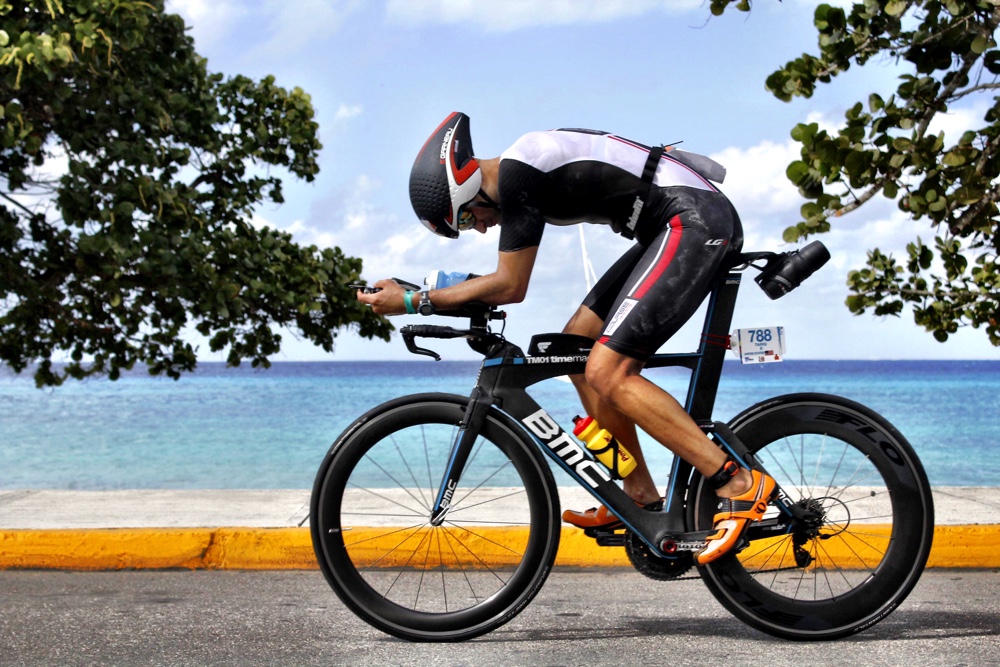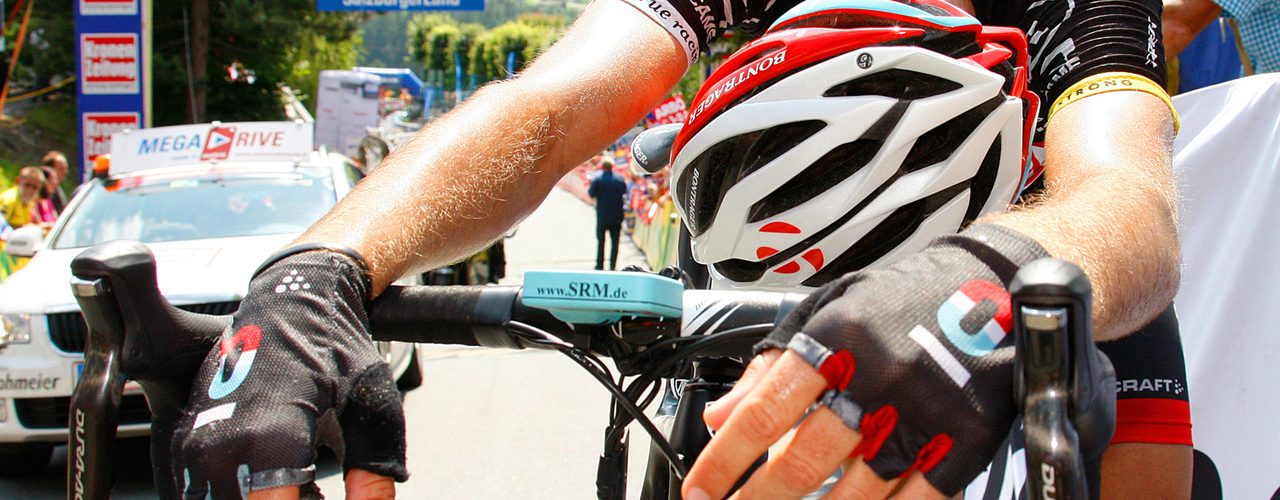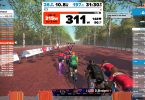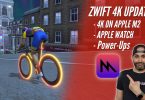We aspire to become better. To develop our mental and physical strength, to compete in more races, and to win more races. The more we train, the more we will succeed. ‘No pain, no gain’, ‘train hard, win easy’, ‘pain is temporary, glory is forever’ are some mantras that many pro-wannabes live-by. But is it really just ‘train, train, train’?
The 2016 season was largely one to be forgotten, for Michal Kwiatkowski, a former World Road Race Champion.

After a promising start to his season, taking top spot at E3 – Harelbeke, Kwiatkowski’s dominance faded; his notable achievements diluted in a list of DNFs and subpar – performances. Kwiatkowski slipped from 26th to 67th in the UCI World Rankings (individual).
His lacklustre rides have been attributed to overtraining.
What is overtraining?
Overtraining is the result of giving your body more physical stress than it can handle.
When your body is unable to recover quick enough from the load of stress caused by physical activity, your ability to perform will fall, and ‘plateauing’ will occur – Your physical improvements will come to a halt, as your muscles are not in their optimum condition to deliver winning performances.

As your muscles undergo stress, they experience microscopic damage (microtrauma). Your body usually has enough time to repair these micro-tears, with sufficient recovery, resulting in stronger muscles. But if you create micro-tears faster than your body can repair them, your muscles will not be able to function to their full potential.
Overtraining can happen to any of us. From those who ride fewer than 100 miles a week, to the lucky few who may spend all their time riding, and cover 400+ miles a week, overtraining can have some nasty negative effects on your physical and mental state.
Symptoms of overtraining
Some effects of overtraining are listed below:
- Constant muscle soreness – Your legs will hurt when doing the basic things, such as walking upstairs.
- Constant tiredness – This is different from being tired from a hard training session. You will feel fatigued after adequate periods of rest.
- Elevated resting heart rate
- Reduced heart rate variability – Your heart rate varies less during exercise.
- Irritability – You might not notice it yourself, but others may inform you of it.
- Inability to complete workouts
- Consistently poor physical performance – This is relative to how you physically perform, not where you finish in a race. If the standard of your physical performance in races falls, this may be a sign of overtraining.
Steps to prevent overtraining
Eat well – A balanced diet will likely result in an improvement in performance. Healthy foods in general (vegetables, fruits, wholegrain), along with generous amounts of water will help to prevent overtraining. Your body will be receiving vital minerals, vitamins, electrolytes, carbohydrates, proteins and the right kind of fats to promote recovery.

Do treat yourself though, every now and again. Whether it be a beer or an ice cream sundae, incentives like this may help you to maintain your healthy eating throughout the week.
Get more sleep – The average adult should get 7 – 9 hours of sleep per night. Your most intense period of recovery is sleep. In addition to improving your physical recovery, you will give your mind a chance to relax and wind down…
Create a training plan/diary – Periodise your training. Structure your training appropriately, factoring in the essentials (sleep, work, social time, family commitments, etc) and allow for adequate periods of rest.
If you feel like you could handle a little more training load, without significantly increasing your risk of overtraining, illness, injury and/or ‘burning out’ (loss of enthusiasm to ride), then increase your weekly TSS by up to 10%.
Make sure you are specifically training towards your goals for the year. For me, riding many miles a week may appear to be a nicer option that 3 or 4 really intense workouts. But what will improve my power the most?
The majority, including myself, don’t currently have the luxury of being able to live the life of a pro. Making the most of the time we give to training is crucial to developing ourselves physically.
This is where intensity factor (IF) and normalized power (NP) are important. A tough 1-hour sprint or hill session is likely to result in a fairly high TSS score, let’s say 100, due to the high levels of stress induced into your muscles. A 2-hour steady ride may also result in a TSS score of 100 (TSS factors in the duration of your ride as well as intensity). Although both scenarios result in the same TSS, your NP and IF will be higher in your sprint/hill session. Your legs will probably feel more sore from such a session as well, suggesting you have stressed your legs more, for a ride that has taken half the time.
Take adequate periods of recovery after each ride – Allow your muscles to repair themselves before the next session.
Get a massage – A rub down of the worked muscles may help to relieve ‘knots’ – Small patches of clenched muscle fibers that are sensitive and cause aching or stiffness.
Alternate muscle groups – Avoid training a particular set of muscles repeatedly within a short space of time. Stressing a group of muscles constantly will result in muscle soreness, and may lead to your inability to complete workouts.
Fitness and freshness – What is it?
I have chosen Strava to explain what fitness and freshness is, how you can identify your fitness, fatigue and form levels using their graph, and what things you should be looking out for when you take a look at your own graph. I personally use Strava to analyze my rides.
But do take note, that this analysis of data is also available through other software, such as TrainingPeaks and Golden Cheetah.
Warning: The information below is relatively technical.
Fitness is the ability to carry out a particular role or task. While fitness is a complicated concept, it can be simplified to an accumulation of training. The more training an athlete does, the fitter the athlete will be.
The term ‘freshness’ relates to your physical form. An athlete with good form will be fit, but not fatigued.
How to identify overtraining using fitness, fatigue and form
The Fitness and Freshness chart, courtesy of Strava, presents three key measurements that will help to determine whether you are relatively fit, have good/poor form, and whether you need a rest or not:
- Fitness
- Fatigue
- Form
The chart requires data from a heart rate monitor and/or a power meter. You will need to be a Strava Premium member as well, to view your fitness and freshness graph. The chart uses your Training Stress Score (TSS) or Suffer Score to quantify your daily training.
What is my Training Stress Score (TSS)?
Your Training Stress Score (TSS) is a value that indicates how much stress you have induced into your muscles. TSS takes into account the intensity and duration of a workout, to produce a value representative of your physical stress created by that training session.
A TSS score of 100 is equivalent to you riding as hard as you can for 1 hour. Normalized Power and Intensity Factor are used to help calculate your TSS.
What is Normalized Power (NP)?
Normalized Power (NP) is an estimate of the power that you could have maintained for the same physiological “cost” if your power had been perfectly constant, such as on an ergometer. Your normalized power value will likely be higher than your average power value, as your NP excludes variables such as the wind, hills and descents.
What is Intensity Factor (IF)?
Intensity Factor (IF) is the ratio of the Normalised Power to the rider’s functional threshold power (FTP), giving the user a relative intensity in relation to their threshold power. An intensity factor of 1.0 illustrates that the user has put out a Normalised Power value equal to his/her FTP value.
What is the ‘Suffer Score’?
The Strava Suffer Score is an analysis of your heart rate data. By tracking your heart rate throughout your session, and comparing it to your maximum heart rate level, a suffer score will be produced. The more time you spend going full gas and the longer the activity, the higher the suffer score.
Let’s have a look at Strava’s Fitness and Freshness chart below:

Fitness
The fitness value (60) to the left of the image, illustrates how fit I am at this moment in time. I have averaged a Training Stress Score of 60, per day, for the last month. The fitness trace is shown by the darkest line on the graph.
Sharp increases in this line denote periods of stressful riding, and decreases denote periods of rest (or I may have been ill). The ‘-3‘ value, highlighted in red next to (60), shows my change in fitness over the last 7 days – My fitness value has fallen by 3 points, in comparison to where it was 7 days ago.
Out of the three measurements, I would take the least interest in my fitness value when working out whether I need to take a break from riding. The other two measurements (fatigue and form) will generally tell me how stressed my muscles are.
Fatigue
Overtraining is most recognizable in your fatigue trace on the graph, in my opinion.
Sudden spikes in your fatigue trace (second darkest line) indicate a ride or a couple of rides that have induced a lot of stress into your muscles. If your fatigue trace features the odd spike here and there but fluctuates consistently, then your risk of overtraining is small. The fluctuation indicates that you are stressing your muscles at some moments in time, but are also allowing your muscles to rest.
On the other hand, if your fatigue trace continues to shoot up and remains notably high, for 3 weeks or more, then your risks of overtraining are greater. Your body is becoming more and more fatigued, and you may start to experience some of the overtraining symptoms listed further below.
A constant fatigue score of 80 or more, for me, will result in a decrease in form, performance and physical gain, in a relatively short space of time (approximately 3 weeks).
If your fatigue score is relatively high, yet you haven’t been stressing your muscles lately, your FTP may need to be updated. Your FTP (Functional Threshold Power) is the maximum power you can sustain for an hour.
Your FTP value is key to Strava determining how hard a ride was. If you do not update your FTP often, fitness, fatigue and form values that are presented will not be realistically true. So test yourself every now and then.
Hard and/or long rides will result in a spike in your fatigue score. Don’t worry about one or two large, sudden spikes, as this is common. You have to stress your muscles at some point if you wish to induce change!
Form
A form score greater than zero indicates relatively good form; your muscles are in pretty good condition. A form score less than zero suggests the opposite.
My form score of 7 suggests that my current form is relatively good. I am pretty fit, and not fatigued. For a particularly large race, I will try to increase my form to a value that is greater than zero. An increase in your form will result in you tiring less in a race – Your fitness will be less blunted by fatigue. The form trace is shown by the lightest – colored line on the graph. A constant fall in your form trace will be reflected by a constant rise in your fatigue trace.
The effects of poor form can be reversed relatively quickly (3-5 days). However, the effects of severe fatigue require significantly more time to return to a good condition (potentially months).
I hope that this article has been of some benefit to you.Thank you for reading!









Fitness and Freshness is completely useless. Why? Because if you update your FTP or max heart rate, the F&F graph completely refreshes for your entire history as if the new FTP has always been there. So the old rides which might have been strenuous now are “easy” and give very little benefit to Fitness. Strava knows about this bug and has known about it for YEARS and still won’t fix it. Since any change in FTP completely rewrites history, it makes any meaningful assessment of trends and evolving fitness impossible.
See here for example:
https://support.strava.com/hc/en-us/community/posts/203479564-Changing-FTP-changes-all-previous-training-score-data?page=1#comments
Yep, this has been an issue that I brought up with them but they don’t seem to understand how FTP works.